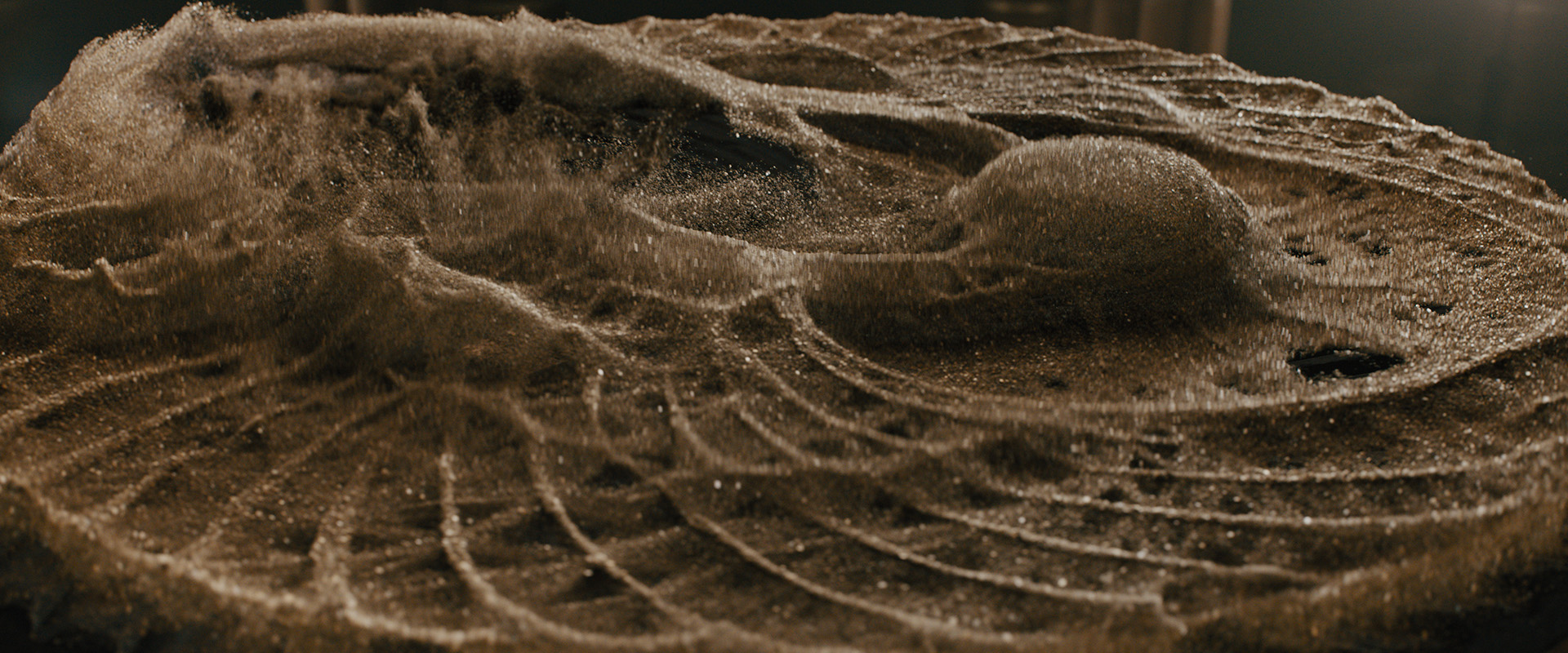From Cymatic Sand to Dreamworlds: Inside Digital Domain’s VFX for Fountain of Youth
2025年06月26日For Apple Original Films’ action-adventure, Fountain of Youth, hailing from Skydance Media, award-winning visual effects studio Digital Domain delivered stunning, photoreal visual effects that helped bring the film’s most ambitious moments to life. VFX Supervisor, Jay Barton, worked closely with production-side VFX Supervisor, Pete Bebb, to lead Digital Domain’s work in the film’s final act as the characters arrive in Egypt, bringing to life the intricate interior of the pyramid chamber, Luke’s dream discovering the mask, an ethereal desert dream, and an action-packed gun battle. The Digital Domain team also developed the mesmerizing levitating cymatic sand effect, prominently featured within the pyramid. Even in the film’s most fantastical moments, maintaining a sense of realism was central to the artists’ creative approach.
Creating the Cymatic Sand FX
For the pyramid chamber sequence, Digital Domain was assigned the task of designing and developing the levitating sand effect from the ground up, including how the sand would interact with the environment, react to sound, and move throughout the millstone to drive key story moments. The team continually refined the patterns, timing, and overall appearance to ensure the effect supported both the visual style and narrative of the film. Rooted in real scientific principles, achieving the right balance between realism, beauty, and creativity proved to be one of the studio’s most significant artistic and technical challenges.
Using Chladni’s Law to generate accurate black-and-white cymatic patterns, the FX team handcrafted sand simulations that fluidly transitioned from floating geometries to symbolic shapes, including a scarab shape, which is essential to the show’s mythology. Rendered in Mantra and simulated in Houdini, the sand needed to vibrate rapidly yet remain visually readable across a variety of camera distances. To avoid a uniformly blurred or noisy appearance in the high-frequency sand, the team developed techniques to fade and blend particles based on their distance from the camera. To form the scarab shape, each particle in the simulation was directed toward a nearby target position, dynamically re-evaluating its goal if another particle claimed it first. This created the impression of sand crawling over itself to assemble the shape, grounding the effect in physical behavior rather than making it feel overtly magical.
Building the Dreamworlds
Digital Domain also brought two surreal dream sequences to life, including one in which Luke dreams of his late father, a fellow adventurer who once discovered a powerful artifact but chose to leave it behind. In the dream, Luke finds the artifact and claims it for himself. As he does, his father suddenly appears, only to wither away before his eyes, his body crumbling and dissolving into a spreading mold that creeps across the ground toward Luke and onto his body. In that moment, Luke jolts awake from his sleep, and the dream is over.
To create the emaciated transformation and desiccation effect, inspired by both fungal decay and mummification, Digital Domain extended the practical sets and added photoreal digital matte painting elements. The team also simulated fungal growth spreading across the floor and Luke’s skin, which was then passed to the compositing team to seamlessly blend the emaciation effect with the live-action plate of the actor.
The second dream sequence follows Luke as he wanders alone across a dry, scorching desert. In the distance, he sees a floating, glowing glass of water: “the water of life.” Desperate and dehydrated, he approaches, only to be confronted by visions of his sister and daughter. Just as he reaches out and grabs the glass, they begin to wither and fade before his eyes.
Shot on a stage using a sandbox and carefully positioned lighting, the desert dream sequence required extensive visual development. Digital Domain gathered a wide range of references and presented multiple lighting styles and looks to the production team to help define the ideal visual tone. To complete the environment, artists created set extensions and matte paintings from two different angles, featuring undulating desert hills, and layered in several FX elements, such as drifting sand and atmospheric effects, to enhance realism throughout the scene. The glass needed to feature realistic reflections and refractions of the surrounding environment as well as simulated condensation drops and sloshing water within it. To achieve this in an efficient way, the FX team was able to build repeatable Houdini templates for the water and blowing sand that could be iterated on and adjusted at a sequence level. The glass was fully recreated in CG and rendered along with the simulated water with Vray in Solaris to ensure a cohesive and believable look.
Shoot out in the Music Chamber
Inside the music chamber of the pyramid, Digital Domain conducted extensive firearm reference research to inform the scene’s action and destruction. Shot on a stage, the production depended on detailed photography and scans of the sets, which Digital Domain used to create CG extensions of the chamber. Artists applied significant environmental damage, practical integration, and custom pillar fracturing, rendered in Mantra, to enhance the intensity of the close-quarters combat.
The project involved over 160 artists from Digital Domain’s Vancouver, Montreal, Los Angeles, and Hyderabad locations, who contributed to nearly 350 shots for the film.
Fountain of Youth is now streaming on Apple TV+.


